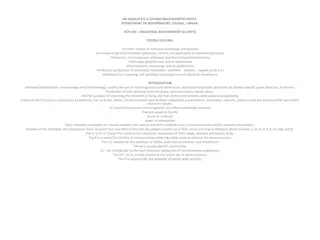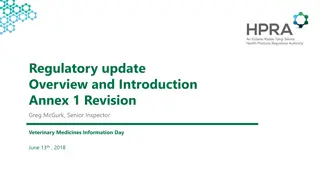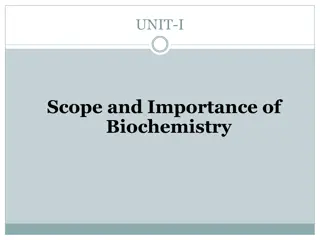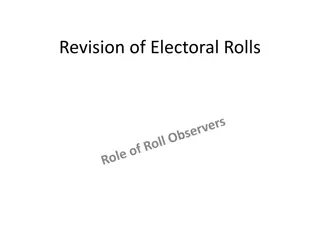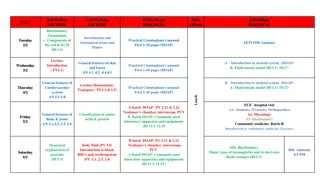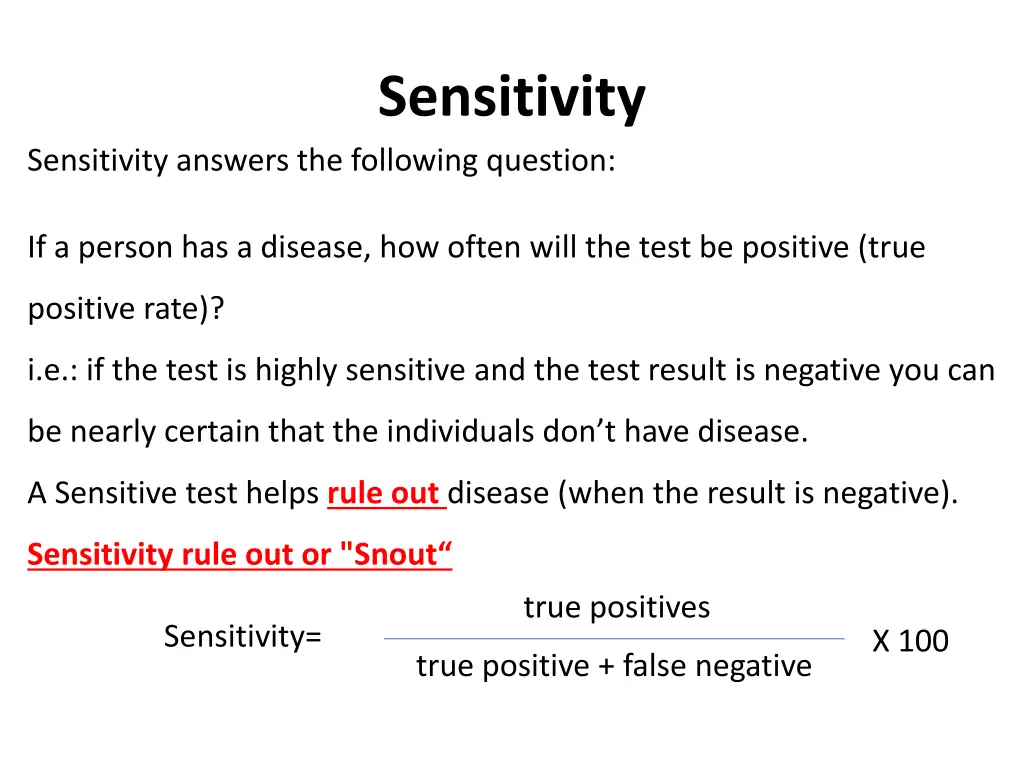
Understanding Sensitivity and Specificity in Diagnostic Tests
Learn about the concepts of sensitivity and specificity in diagnostic tests, how they help rule out or rule in diseases, and how they are calculated using a 2x2 contingency table. Explore examples and quality measures to understand these key metrics for evaluating test performance.
Download Presentation

Please find below an Image/Link to download the presentation.
The content on the website is provided AS IS for your information and personal use only. It may not be sold, licensed, or shared on other websites without obtaining consent from the author. If you encounter any issues during the download, it is possible that the publisher has removed the file from their server.
You are allowed to download the files provided on this website for personal or commercial use, subject to the condition that they are used lawfully. All files are the property of their respective owners.
The content on the website is provided AS IS for your information and personal use only. It may not be sold, licensed, or shared on other websites without obtaining consent from the author.
E N D
Presentation Transcript
Sensitivity Sensitivity answers the following question: If a person has a disease, how often will the test be positive (true positive rate)? i.e.: if the test is highly sensitive and the test result is negative you can be nearly certain that the individuals don t have disease. A Sensitive test helps rule out disease (when the result is negative). Sensitivity rule out or "Snout true positives Sensitivity= X 100 true positive + false negative
2 X 2 Contingency Table Test Disease + - + True Positive (TP) False Positive (FP) - False Negative (FN) True Negative (TN) TP Sensitivity= X 100 TP+ FN
Specificity Specificity answers the following question: If a person does not have the disease how often will the test be negative (true negative rate)? i.e., if the test result for a highly specific test is positive you can be nearly certain that the individuals actually have the disease. A very specific test rules in disease with a high degree of confidence (when the result is positive). Specificity rule in or "Spin" true negatives Specificity= X 100 true negatives + false positives
2 X 2 Contingency Table Test Disease + - + True Positive (TP) False Positive (FP) - False Negative (FN) True Negative (TN) TN Specificity= X 100 TN+ FP
An ideal diagnostic lab test results for many subjects (normal and patients) Normal N = 500 Hepatitis N= 500 A perfect test for acute hepatitis: The test identifies ALL patients with disease and All subjects without disease 100% of the time.
Acute hepatitis Disease Normal Serum bilirubin level The lab test results in normal and disease conditions overlap. To increase the overall accuracy of the test, the centermost point of overlapping is chosen as the cutoff value. There are some normal subjects who will have a positive results (False positives) There are some patients who will have negative results (False negatives)
Example of calculation A Lab test to measure serum bilirubin was performed on 1000 individuals. The test gave the following results: Number of positive results in patients with acute hepatitis: 440 Number of positive results in normal subjects: 50 Number of negative results in normal subjects: 450 Number of negative results in patients with acute hepatitis: 60 For this Serum bilirubin test, calculate the following quality measures: 1. The sensitivity 2. The specificity
Test Disease Test Disease Answer: draw a 2 X 2 Contingency Table + - + - + TP FP + 440 50 - FN TN - 60 450 Sensitivity=TP 440 Sensitivity= 88% X 100 = X 100 = 0.88 x100 440+ 60 TP+ FN 450 450+ 50 Specificity=TN Specificity= 90% X 100 = X 100 = 0.90x100 TN+ FP








